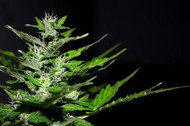What Is CBD And Why Might It Matter
Posted by Yolanda Campbell on Jul 09, 2023

Cannabidiol or CBD is a part of the cannabis plant discovered around 1940. The Cannabis plant has many varieties and offers a number of products for human use – hemp fibers, a renewable, environmentally supportive product used to produce paper, textiles and even building materials; marijuana – commonly used for its relaxing euphoric effect; and CBD with its vast possibilities for medicinal use.
Ongoing research is showing patients are gaining relief from inflammation, pain, anxiety, psychosis, seizures, spasms and other conditions ("Project CBD: Medical Marijuana & Cannabinoid Science"). Studies have indicated CBD has anti-inflammatory properties (possibly reducing the risk of cancer, metabolic disorders and neurodegenerative diseases. One current study indicates CBD administered locally, blocks osteoarthritis pain (Philpott, O’Brien and McDougall). Cannabinoids can stimulate new nerve cells, even in aging brains; they have the ability to block an enzyme that destroys bone-building reducing the risk of osteoporosis and osteoarthritis; and, as a more powerful antioxidant than either vitamin E or C, can repair damaged skin and has potential benefits in treating acne and other skin problems ("Project CBD: About").
For centuries, man has known that resinous cannabis flower tops are well endowed with medicinal components even the Cannabis roots have given relief for various ailments in traditional cultures ("Project CBD: About"). Cannabis has the longest recorded history of human use. Early Chinese texts (3,000 BC) document the relief of pain and cramps and ancient India records anxiety relief (Pacher, Butka, & Kunos).
Scientists have discovered and are researching a new biological system found in just about any living thing with vertebrae – the endocannabinoid system (ECS). While working to trace the metabolic pathways of THC, scientists discovered an entirely unknown molecular signaling system that resides within us and within everything on our planet with the exception of insects. Research is showing that the endocannabinoid system is responsible for maintaining our bodies - everything from helping to maintain healthy bone density to naturally preventing diabetes (Granowicz). Other studies suggest the ECS regulates systems in both health and disease including ECS in the skin. These newer studies indicating ECS controls the proper and well-balanced generation, distinction, continuation and the immune capability and/or resilience of skin cells. Maintaining this fragile balance might prevent and heal conditions of the skin including acne, seborrhea, allergic dermatitis, itch and pain, psoriasis, hair growth disorders, systemic sclerosis and even cancer (Biro). And yet another study indicates that clinical endocannabinoid deficiency (CECD) may be the underlying cause of migraine, fibromyalgia, IBS, and other functional conditions and these conditions may be relieved by CBD (clinical cannabis) (Russo).

Much of the information and many of the studies regarding CBD are recent and ongoing. Although humankind has utilized cannabis for thousands of years, much of the available information is anecdotal. However, the information here, these sources and others, and the dedicated researcher are discovering facts and continuing belief that CBD and the study of the Endocannaboid System may offer treatment, cure, control and prevention for some of today’s most frightening conditions (such as ALS, Parkinson’s or Alzheimer’s) and even caner (Granowicz). Greater understanding about our bodies and how they work - natural ways to trust our health to – seems like a win/win.
Songline Enterprises is currently studying the benefits of CBD oil as an ingredient in future Emu Oil products for skin care and pain relief.
Resources
Bíró, Tamás et al. “The Endocannabinoid System of the Skin in Health and Disease: Novel Perspectives and Therapeutic Opportunities.” Trends in pharmacological sciences 30.8 (2009): 411–420. PMC. Web. 22 July 2018.
https://www.ncbi.nlm.nih.gov/pmc/articles/PMC2757311/
Granowicz, Julia. "The Endocannabinoid System: A History Of Endocannabinoids And Cannabis | The Marijuana Times". Marijuanatimes.Org, 2016,
http://www.marijuanatimes.org/the-endocannabinoid... Accessed 27 July 2018.
http://www.marijuanatimes.org/the-endocannabinoid-system-a-history-of-endocannabinoids-and-cannabis/
"Project CBD: Medical Marijuana & Cannabinoid Science". Projectcbd.Org, 2018,
https://www.projectcbd.org. Accessed 22 July 2018.
https://www.projectcbd.org/about/herbal-medicine/cbd-preventative-medicine
Pacher, Pal, Batkai, Sandor, and Kunos, George. “The Endocannabinoid System as an Emerging Target of Pharmacotherapy.” Pharmacological reviews 58.3 (2006): 389–462. PMC. Web. 23 July 2018.
https://www.ncbi.nlm.nih.gov/pmc/articles/PMC2241751/
Philpott, Holly T., Melissa O’Brien, and Jason J. McDougall. “Attenuation of Early Phase Inflammation by Cannabidiol Prevents Pain and Nerve Damage in Rat Osteoarthritis.” Pain 158.12 (2017): 2442–2451. PMC. Web. 22 July 2018.
https://www.ncbi.nlm.nih.gov/pmc/articles/PMC5690292/
Russo, Eb. "Clinical Endocannabinoid Deficiency (CECD): Can This Concept Explain Therapeutic Benefits Of Cannabis In Migraine, Fibromyalgia, Irritable Bowel Sy... - Pubmed - NCBI". Ncbi.Nlm.Nih.Gov, 2008, https://www.ncbi.nlm.nih.gov/pubmed/18404144. Accessed 22 July 2018.

